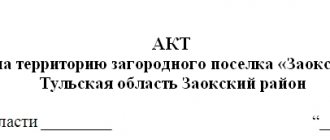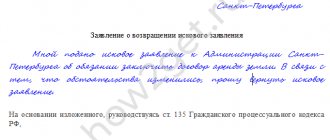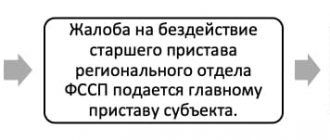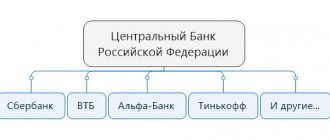Modern information space and speed of communications allow citizens to easily find like-minded people, form initiative groups, collectively discuss problems and ways to solve them, put forward demands and achieve their fulfillment. If the settlement of the dispute that has arisen is permissible only in court, then such groups have every legal basis to go to court in a consolidated manner.
Class actions have been filed since October 1, 2021 in accordance with the new procedure (Chapter 22.3 of the Code of Civil Procedure of the Russian Federation).
Causes
The reasons for the consolidated appeal to the court are violations of the rights of a large circle of persons, therefore such claims are typical for the sphere of protecting consumer rights, protecting the interests of equity holders in construction, and collections in the housing and communal services sector. This legal institution is used when considering any categories of civil cases (with the exception of cases of special proceedings).
There are often disputes that cannot be resolved in court without an expert examination. When filing a group appeal, the cost of the examination (services of a notary, appraiser, translator) is divided among all plaintiffs, which is much cheaper and more expedient than conducting an examination by each of the plaintiffs when filing individual claims. As a result, filing a collective application reduces legal costs. Moreover, in cases where class actions are needed, small amounts of damage often appear, because of which citizens individually do not go to court due to their insignificance.
For the employer
While it is still impossible in Russia to file class action lawsuits against an employer, no changes have occurred since October 1. There is no legal possibility of filing a claim under the provisions of Chapter 61 of the Labor Code of the Russian Federation. The procedure for resolving a collective labor dispute consists of the following stages: consideration of a collective labor dispute by a conciliation commission, consideration of a collective labor dispute with the participation of a mediator and (or) in labor arbitration.
Consideration of a collective dispute by a conciliation commission is a mandatory stage. Even if there are claims of the same type against one employer, employees are forced to go to court individually, since the grounds (employment contracts) and claims (collection of wages, bonuses) will differ significantly.
A striking example is the closure of a famous automobile plant in the Leningrad region. During the period of reduction, the court considered dozens of claims from former employees, but all of them were individual.
For the management company
Filing a “housing” class action lawsuit in civil proceedings seems realistic in practice; the number of people can be significant, since we are talking about residents of an apartment building. Violations in the housing and communal services sector always affect the rights of a large group of people. Residents are united not only by their community of residence and the same requirements for the quality of services, but also the agreement with the management company, which is the basis for the emergence of the right to certain services, is standard.
Upon dismissal
When dismissing employees, a joint appeal to the court is difficult: in addition to the lack of a legal mechanism for filing a class action in court, enshrined in the Labor Code of the Russian Federation, the circumstances of each case will differ in the presence of benefits, special length of service or the special status of the employee (manager, pensioner, part-time worker). Illegally dismissed employees submit applications for reinstatement to the courts at their place of residence, which is more appropriate than at the location of the employing company.
What is a class action, who files it and when?
A class action is a joint appeal of a group of people to the judicial authorities in order to protect the rights and interests of citizens.
This phenomenon is common in the West, but in Russia this type of litigation is in its infancy.
Filing a claim from a group of citizens is regulated by the Code of Civil Procedure of the Russian Federation and the Arbitration Procedure Code of the Russian Federation. These codes stipulate cases in which it is possible to file a claim from a collective:
- if the trial involves a violation of the rights and freedoms of several people at once;
- if the violated rights have a single basis;
- if similar rights are violated.
A class action lawsuit can be related to various problems, for example, a labor collective can sue an employer who regularly deprives employees of wages or illegally fired them during the liquidation of the organization.
In addition to filing a lawsuit by several persons, Articles 45 and 46 of the Civil Procedure Code of the Russian Federation introduced the concept of a procedural plaintiff.
A procedural plaintiff is a person who appears in court, defending not his own rights, but the rights of a group of people. The number of people protected in this case is not limited.
Local government bodies, prosecutors, organizations, companies, and citizens can act as procedural plaintiffs.
A class action lawsuit can be filed if labor rights or tenants' rights are violated, and consumer rights can also be violated. In these cases, the claim is filed against the organization that committed the illegal actions.
Most often, the resolution of the claim is the collection of penalties from the violator, as well as various types of compensation: compensation for property, mental and physical, and environmental damage.
In addition, it is possible to file a class action lawsuit against the offending neighbor. This happens when the residents’ appeal to all other authorities has not helped.
Complaints against neighbors are usually accepted by the district police officer, the prosecutor's office, a representative of the housing and communal services, and Rospotrebnadzor. But it happens that conversations with a neighbor and fines issued to him by the local police officer are not enough. In this case, it is possible to go to court with a collective statement.
There are several types of neighbors:
- alcoholics are those who disturb their neighbors with their alcoholism: constant noise, fights, songs behind the wall.
- partygoers - citizens listening to their favorite music at maximum volume (according to the law, noise from neighbors should not exceed 3 DB);
- builders - neighbors carrying out repair and construction work around the clock;
- remodelers - those who decided to engage in illegal redevelopment of an apartment, as a result of which, for example, the floor of neighbors above may collapse;
- cat owners are neighbors who breed a huge number of pets, which causes corresponding noise and smell;
- garbage collectors - lazy residents of an apartment building, lazy to take garbage out onto the street and put it in the entrance, and in some cases even leave it in the house;
- brawlers - in a standard situation, a husband and wife are arguing, the noise from which is several floors high.

This is only a small part of the types of neighbors whose activities are prohibited by law. Of course, you shouldn’t file a complaint, much less a lawsuit, against neighbors whose newborn owner is noisy. It is necessary to distinguish between the boundaries of life circumstances and offenses.
If complaints to the police, management company, administration and other bodies are useless, it is necessary to file a class action lawsuit.
There are situations in which you cannot do without a trial. For example, the upstairs neighbor flooded the residents of apartments several floors below several times. He refused to compensate for the damage. It is unlikely that representatives of housing and communal services or Rospotrebnadzor will persuade the violator to pay money. In such situations, only the court has the power to award compensation.
Thus, the essence of filing a class action lawsuit is as follows:
- The initiator of legal proceedings can be either the injured group of people or the person defending them.
- The number of people filing a claim can be definite (a group of people) and indefinite (when defended by an organization, authority or individual).
- The requirements of the lawsuit may be of a coercive nature, for example, to stop unlawful activity against the plaintiffs.
Where and how to submit
Statements of claim in civil cases are filed in district courts of general jurisdiction, while corporate disputes are considered by an arbitration court. Thus, at the initial stage, based on the subject of the dispute and the characteristics of the group of persons whose rights have been violated, it is necessary to correctly determine jurisdiction. A class action is filed in the usual manner personally by one of the group or by a representative of the group based on a power of attorney. The final part of the class claim must contain claims against each of the class members who joined the class petition.
Filing a claim
A collective lawsuit is filed according to the general rules for drawing up statements of claim, provided for in Art. 131 Code of Civil Procedure of the Russian Federation. The differences between a class action lawsuit include:
- multiplicity of plaintiffs (up to 20 people);
A class action lawsuit consists of the following structural components:
- “caps of the claim”, which sequentially lists the name of the court, the full name and addresses of all plaintiffs, the full name and address of the defendant;
- claim prices. In a class action lawsuit, the price is calculated based on the aggregate claims of all plaintiffs;
- a descriptive part, including a statement of the reasons why the claim was filed, that is, the event that became the basis for filing the claim;
- the motivational part, consisting of a statement of justifications for the stated claim, that is, evidence of the violated rights of the plaintiffs;
- the operative part containing the claims in their condensed form;
- list of applications. Receipts for payment of the state duty by each of the plaintiffs, depending on their stated claims, must be attached. Optionally, documents substantiating specific claims are attached;
- date of filing the claim and signatures of all plaintiffs. If a class action is filed by proxy by one of the plaintiffs or their common representative, then only the signature of the representative may be required.
A claim is filed in the number of copies and copies of attached documents corresponding to the number of defendants.
What documents are needed when compiling
When drawing up a statement of claim, you will need a standard package of documents, and additional documents are listed in Chapter 22.3 of the Code of Civil Procedure:
- evidence of each plaintiff's class membership;
- an indication of the citizens who are members of the group and the grounds for such membership; their personal data, including place of work (or date and place of state registration as an individual entrepreneur). For organizations - name and address;
- if the claim is filed by non-members of the group - documents confirming the right of the body, organization or citizen to go to court.
This is important to know: How much does it cost to file a statement of claim in court?
Under what conditions is it possible for a group of people to submit an application?
If there is one common defendant in a dispute and homogeneous rights are disputed, the rights of individuals are based on common factual circumstances, and all members of the group have chosen the same method of protecting their rights - a class action, how many people are needed by the day they go to court? The group must consist of at least 20 plaintiffs. The addition of new plaintiffs is allowed until the stage of judicial debate.
To apply to the arbitration court, a class action is possible from a group consisting of at least 5 people. Submitting an application to join new members of the group is permitted via the Internet - on the official website of the court or through the State Automated System "Justice".
State duty
Article 244.27 of the Code of Civil Procedure of the Russian Federation allows a group of persons to conclude and submit to the court a notarial agreement on the procedure for bearing legal expenses. Demands for changes and termination of agreements of a group of persons are presented only to the court, which is considering the case for the protection of their rights and legitimate interests.
The law does not provide special formulas for calculating state fees when a class civil lawsuit is filed. Most often, payment is made by the plaintiffs in equal shares. Accordingly, when 20 participants file a claim, each is required to pay 1/20 of the state fee for the case.
Separately about the state duty
Ideally, the court does not care who pays the state fee, the main thing is that a receipt for its payment is attached to the statement of claim. One plaintiff may well pay the state fee for all co-plaintiffs, or the state fee can be divided equally among all plaintiffs, or each co-plaintiff will pay the state fee depending on the claims made by him.
In any case, the method of dividing the burden of state duty is chosen depending on the type of claim. So:
- for non-property disputes, the standard state fee in the amount of 300 rubles must either be paid by each plaintiff separately, or be paid in a single payment in the amount of 300 rubles x the number of plaintiffs;
- for property disputes, the state duty is paid as a percentage of the cost of the claim. The calculated amount of the state duty can either be divided proportionally for each plaintiff, or calculated based on the size of the claims of each plaintiff, or paid with a single receipt. The main thing is that the total amount of state fees paid corresponds to the price of the claim.
If one or more of the plaintiffs have benefits in paying the state duty, then their part when calculating the state duty is deducted from the price of the claim. To facilitate the task of calculating state duty, there is a corresponding calculator on our website.
Disadvantages of collective treatment
In some cases, it would be more logical to determine a different jurisdiction for the claim, but the Code of Civil Procedure of the Russian Federation does not provide such an opportunity. For example, if a claim is filed by residents of an apartment building against a management company whose legal address is located in a place different from the address of this building. It is important to note that the courts have not yet considered class actions in 2021 from tenants, and therefore it is not yet possible to analyze judicial practice.
In addition, this method of resolving disputes in the Russian Federation still has one main drawback - rare practical application in Russian courts. Until now, citizens prefer to file individual lawsuits as the fastest and most effective way to protect their rights.
Recent changes in legislation are quite capable of spurring the development of a new legal mechanism - the spread and development of judicial practice will make it especially popular in the field of consumer rights protection and related areas, Russians will be able to file class civil lawsuits more often and more effectively.
Proceedings on an independent claim are suspended if the group claim is filed later than the individual filing with the court. The judge first considers the class action; Article 244.25 of the Code of Civil Procedure of the Russian Federation established this order of consideration of the case to stimulate the association of plaintiffs and facilitate the work of courts with homogeneous claims.
Features of the administrative process
CAS RF contains special rules for those who filed an individual application during the period when a collective one is being considered on the same issue. The court must invite such an applicant to join the group proceeding. If a person joins, the court considers his claim within the framework of a collective claim, and the decision on it will be binding on all participants.
Otherwise, his application is suspended until the group case is considered on the merits. This point should be taken into account when filing a claim so as not to lose procedural time.
In addition, if initially the case was considered within the framework of ordinary complicity (there were several administrative plaintiffs), the judge can, by his ruling, give it the status of a collective case when more than 20 persons join the process. In this case, the consideration of the case will begin again.
Lawsuit for the company
Let us recall that the code, adopted a year ago, prescribes the procedure for considering disputes between citizens and government agencies. The special procedure is designed to equalize the chances of an ordinary person during a trial with officials. After all, the latter often have great opportunities. And sometimes no one stands behind a person.
This is important to know: How to correctly draw up a statement of claim in court: sample 2021
One of the innovations introduced by the code is the ability to file class actions. When the same problem affects a large group of people, they can band together and file a lawsuit together. There is no need for everyone to go to court separately: the truth can be achieved during one process.
As the Supreme Court explained, “a person conducting an administrative case in the interests of a group of persons acts in court proceedings without a power of attorney, enjoys all the rights and bears the procedural responsibilities of an administrative plaintiff, including the right to renounce an administrative claim and enter into a reconciliation agreement.”
Expert opinion
Kuzmin Vasily Stanislavovich
Lawyer with 6 years of experience. Specialization: criminal law. More than 3 years of experience in developing legal documentation.
Simply put, the court will only need one representative from among the plaintiffs. And he will have all the rights. If he decides that it is possible to reconcile with the defendant, there is no need to resolve the issue by voting among all the plaintiffs.
If the representative of the collective is not himself one of the plaintiffs, he must have the status of a lawyer. So if there is no person in the group of plaintiffs who is ready to take on all the hardships of the process, they can only turn to professionals for help.
In this case, any of the plaintiffs have the right to get acquainted with the case materials and make copies. But, since it is not necessary for everyone to be present at the court hearing at once, only the official representative of the team will receive notifications. Others will not be notified of current meetings.
“The resolution of the plenum of the Supreme Court of Russia particularly focuses the attention of courts of general jurisdiction on the need to respect the procedural rights of persons seeking protection in administrative proceedings, without depriving the courts of the opportunity to use modern technologies in the process,” says lawyer Vyacheslav Golenev. For example, participants in the process will be able to receive SMS notifications if it is more convenient for them.
Another clarification: the Supreme Court prohibited consideration of cases involving forced hospitalization of a citizen in a psychiatric hospital or referral to a tuberculosis hospital using a simplified procedure.
Under the simplified procedure, cases are considered by a judge in the quiet of his office without calling the parties. A man in a robe studies the case materials, weighs the pros and cons and makes a decision.
This procedure has proven itself well in arbitration proceedings. It allows you to quickly solve simple matters. This way the courts are relieved of their workload, saving time and saving the parties to the process. However, when it comes to forcing a person to undergo treatment, the matter is by no means simple. Here the judge must see the person in person. The law prohibits the consideration of such cases without the presence of the defendant or his representative. Therefore, such issues should be resolved according to the usual procedure.
Methods for filing an application

The application must be submitted in person, electronically or by mail
The law does not limit the parties in how they can deliver a petition to the court; for example, the applicant is free to:
- submit it through the office - personally or through a representative (it is advisable to submit the paper in two copies in order to receive a note about the fact and date of submission);
- send via telecommunication channels - using a digital signature (digital signature must be issued in the name of the applicant: citizen, individual entrepreneur or director of the organization);
- use mail or courier delivery services - here it is important to take into account the timing of the letter in transit (if the item is “late”, the judge may refuse on a formal basis);
- orally - exclusively during the hearing (if it is stated in words in the court office, then the clerks will not transfer it to the judge).
What is the essence of a class action lawsuit?
A common legal dispute is a proceeding between two entities with an unresolved dispute. If there are several subjects, it is easier to conduct one trial and solve the problem of many persons at one time. For example, this often happens in the field of consumer protection, public health, etc.
Filing such claims against management companies, whose violations simultaneously affect the rights and interests of dozens and hundreds of citizens at the same time, is becoming the norm. After all, residents are not only owners of apartments, but also co-owners of the common property of the house.
An example is the US legal system - there such a legal institution has several forms of implementation.

How to File a Class Action Lawsuit Against Your Employer
It is also important to note that the number of representatives who can participate in the court hearing, both on the side of the employees and on the side of the employer, is not limited. In one court hearing, the interests of the organization can be defended by several lawyers at once, as well as other specialists who will help to positively resolve the dispute.
But not all enterprises have such commissions. Therefore, we should not forget about this type of conflict resolution, such as a personal conversation between employees and employer.
Money issue (read more...)
Legislative regulation
The intricacies of a class action lawsuit are regulated by procedural rules. Despite the practice of filing such claims, they are not distinguished in any way in civil proceedings. In Art. 46 of the Code of Civil Procedure provides the right to file claims in favor of other citizens. In reality, government prosecutors more often use this right. However, both citizens and their organizations are not deprived of this.
In the CAS, the legislator decided to single out a class action. How successful is another question. However, a start has been made. Perhaps in the future, after judicial practice has accumulated, changes will be made to the civil process.
Grounds for a complaint against an employer.
The procedure for filing a complaint by a group of persons is regulated by Art. 40 Code of Civil Procedure of the Russian Federation.
Several people can join together to file a claim if they have common grounds for doing so.
The reasons for filing a collective complaint against an employer include the following:
- failure to meet salary payment deadlines;
- violations of labor laws;
- failure to comply with labor safety rules;
- violation of the employment contract;
- refusal of official employment, etc.
In most cases, the basis is a violation by the employer of the norms of the Labor Code of the Russian Federation.
Employees have the right to file a complaint even if the manager exerts physical or moral pressure on them, insults them, or uses violence.
Feature in civil procedure
How to file a class action lawsuit to protect your civil rights? The header indicates not one, but several plaintiffs. However, this alone is not enough. In court, it is necessary to justify the community of interests or rights affected by the actions of the defendant.
Both citizens themselves and the authorities have the right to file such a claim. Judges, having received several similar claims against one defendant, also have the right to combine several cases into one.

Collective administrative lawsuit
If we are talking about public relations and the defendant is an official (service, agency, department, administration, etc.), then one should be guided by the norms of the CAS of the Russian Federation. Such cases include processes to challenge cadastral value, challenge actions and decisions of government authorities, etc.
The minimum threshold for the size of a group is established by Art. 42 of the Code - at least 20 participants. To conduct the case, one or several participants are selected, who, by analogy with the Arbitration Procedure Code of the Russian Federation, act in the process without powers of attorney. Joining a claim is made either by signing the text of the claim, or by submitting written statements that can be attached to the claim or submitted directly to the court during the process.
To file a class action lawsuit under the RF CAS, you will need:
- Determine the group of persons and participants who will conduct the case in court.
- Write a statement of claim (participants can either sign it to join the case or submit a written statement).
- Attach evidence to the application.
In addition to the general requirements for a collective administrative application, there are also special ones:
- It is necessary to indicate in the text what the violation of the rights of a group of persons consists of.
- The method of protecting rights in the petition part should be the same for everyone.
- The document must indicate who will conduct the case on behalf of a group of persons.
If a representative conducts a case on behalf of a group, then, in accordance with Art. 55 CAS RF, must have a higher legal education or the status of a lawyer, which is confirmed by relevant documents.
Elements of a class action
Legislation and theory provide for the identification of several elements of the claim:
- grounds – factual circumstances or reasons that prompted the person to go to court;
- the subject of the claim is the demands made by the plaintiffs.
The defendant is the same person. Now we will present two views on group or collective applications to the court.
According to the first, the peculiarity of collective civil suits is the status of the applicant - he protects the interests of others, and not his own.
According to the second, the applicant is both the injured party and the appeal is no longer considered collective. The rules on the interaction of co-plaintiffs come into force.
There is still no answer to the question of which position is correct in the civil process of the Russian Federation. How do judges view class action lawsuits? Despite the similarity of circumstances, the judge may not agree with the simultaneous consideration of applications from several persons.
This is important to know: Submit a claim to a court of general jurisdiction via the Internet

Status of the initiator of the claim under the APC
We should dwell in more detail on the actions and position of the participant who seeks to protect the rights of the group, since this is the significant difference between the arbitration process and the civil process.
First of all, the initiator of the claim acts in the process in the interests of the group without a power of attorney. His powers are confirmed by written statements of participants about joining the requirements. In addition, he must confirm in writing that he belongs to this group.
In the process itself, the initiator enjoys the rights of the plaintiff. He also has a specific duty to invite other class members to join the claim. The court determines the deadline and form for fulfilling this obligation at the stage of preparing the case, in accordance with Art. 225.14 Arbitration Procedure Code of the Russian Federation.
Thus, to submit a collective application in the arbitration process, you will need:
- Determine the group of persons and the initiator of the claim.
- Prepare a class action statement, joining statements and other evidence.
- At the stage of preparing the case, invite other group members to join the lawsuit.
The status of the initiator may be terminated within the framework of Part 4 of Art. 225.12 of the APC, if he himself refuses to exercise his powers or the majority of participants ask the court to do so (for example, if he violates the interests of the group). If the status of the initiator is terminated, then the participants choose another person to replace him. If the person is not selected, the case will be dismissed.
Labor disputes
A collective labor claim is filed in the event of a dispute over the calculation of wages and may relate to working conditions, illegal dismissal and other restrictions allowed by employers.
Statutes of limitations in labor disputes are a confusing topic, and employees have very limited options. For example, they only have 3 months to go to court. Despite the available explanations from the judiciary, there is no accuracy in understanding the application of the rules on the time limits for filing a lawsuit regarding wages.
Given the low level of legal literacy of citizens, many employers take actions without any consequences. The claim filed by the prosecutor's office has a serious documentary basis, obtained as a result of its own inspections or carried out by other bodies (the labor inspectorate). It must be said that without the help of the state, citizens almost never win cases on their own.

How to file a claim in arbitration court?
Filing a claim may occur:
- in person in paper form through the office of the arbitration court
- remotely to the email of the arbitration court using the My Arbitrator program
- with the involvement of third parties - by courier service or through Russian Post
- with the help of our arbitration lawyer: be sure to read our proposal on the issue of drawing up and filing this procedural document.
NOTE: do not forget to attach to the appendix of the statement of claim to the arbitration all extracts for the persons who are attracted by you in the header; these extracts can be printed from the tax authority’s website.
Design features
A civil class action lawsuit follows the same rules. The difference is in some nuances.
It does not matter whether they go to the magistrates' or district court. The rule regarding the location of the court where the application is considered is not canceled. As a rule, the claim is sent to the court at the location or residence of the defendant. In cases involving consumers, lawsuits may be filed in the place where they live.
- The name of the court is indicated in the header.
- The full name of the plaintiffs, place of residence, and other information are indicated.
- The name or full name of the defendant or defendants is indicated in full (the law does not impose a limit on their number).
- The body or person who acts on behalf of the plaintiffs (usually referred to as a person with a procedural interest).
- Statement of the circumstances of the claim - violations committed, in the opinion of the plaintiffs, by the defendant, references to legislation, evidence, etc.
- Justification for the participation in the case of a person defending the rights of the plaintiffs (in the case of the prosecutor’s office - the protection of social rights and the inability to defend themselves).
- Claim requirements.
- List of attached documents (their copies).
- Signature and date of submission.
Expert opinion
Kuzmin Vasily Stanislavovich
Lawyer with 6 years of experience. Specialization: criminal law. More than 3 years of experience in developing legal documentation.
A sample class action lawsuit may not contain information about the plaintiffs, which is typical for applications filed by prosecutors and other authorities.
If specific persons are not named in the claim, then the means of protecting rights should be selected accordingly. If an individual citizen wants compensation for material and moral damage, he can only submit an application on his own behalf. If there are grounds, the prosecutor or authority has the right to represent his interests again.
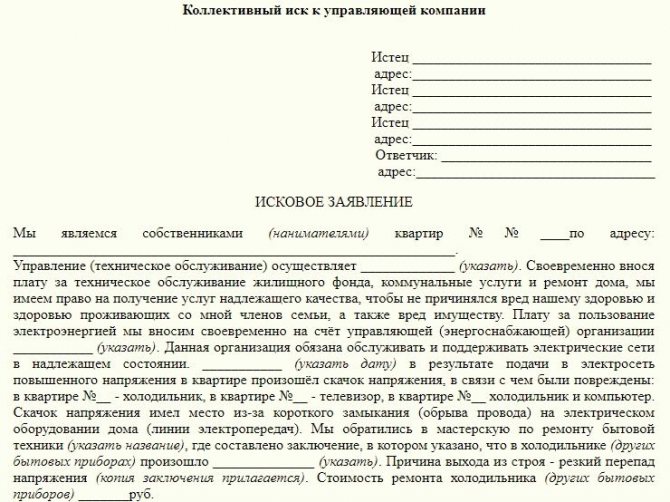
Who can file a petition?
With regard to the filing of petitions during judicial or administrative proceedings in a case, the law ensures equality of rights for all parties involved. The request may come from:
- the plaintiff (his representative);
- the defendant (his representative);
- if the case is criminal - from the suspect, accused, victim (or their legal representatives), as well as from a private prosecutor, expert or organization whose interests were affected during the proceedings in the case under consideration.
It must be taken into account that only their official representatives can submit applications on behalf of one of the parties or participants. The powers of the latter are confirmed by documents:
- a representative of an individual is required to present a notarized power of attorney, allowing him to act on behalf of the client in court and perform procedural actions;
- A full-time employee or a specialist invited under a contract can act on behalf of the organization; his authority is confirmed by a power of attorney on behalf of the first manager (on company letterhead, certified by a “wet” round seal).

The document can be submitted by one of the parties to the process or its legal representative
Representation of interests
Judicial practice has developed a position that filing a class action lawsuit is possible provided that citizens complain about the infringement of their interests. Also, the complaint or statement must state a request for legal assistance, primarily for representation in court. Otherwise, participation in the trial will be considered unfounded. This especially affects government agencies and the prosecutor's office. The sample class action lawsuit provides for a corresponding clause.
The participation of government bodies is limited to their competence as defined by law. This is partly why the prosecutor’s office goes to court more often than other authorities. If they file claims, then the prosecutor is still involved in the process due to the need to give an opinion (custody disputes, labor cases, etc.)
During the consideration, the court has the right to suggest to the plaintiffs that one of them represent common interests. Consent does not deprive others of the opportunity at any time to petition the court or exercise another right granted by procedural law.

How to File a Class Action Lawsuit Against Your Employer
Modern information space and speed of communications allow citizens to easily find like-minded people, form initiative groups, collectively discuss problems and ways to solve them, put forward demands and achieve their fulfillment. If the settlement of the dispute that has arisen is permissible only in court, then such groups have every legal basis to go to court in a consolidated manner. Class actions have been filed since October 1, 2021 in accordance with the new procedure (Chapter 22.3 of the Code of Civil Procedure of the Russian Federation).
All members of the group of persons have entered into service agreements with the management company (hereinafter referred to as the Defendant).
Under what conditions is it possible for a group of people to submit an application (read more...)
Administrative proceedings
A collective administrative lawsuit is filed:
- citizens;
- organizations in cases specified in federal law.
In this case, the consideration of the dispute is governed by the rules of the CAS. What features do such claims have in the framework of administrative proceedings?
- There are many people affected by the dispute.
- Consideration of a dispute by simultaneously involving several plaintiffs is difficult.
- Same circumstances and subject of requirements.
- Group members use the same method to protect their rights and interests.
How is the group formed? The law prescribes a minimum number of plaintiffs - 20 people. To join the claim, a separate application is submitted or a signature is placed under the text of the application. The required number of citizens must be reached by the time the class action is filed. Failure to comply with the requirements will result in the claim being abandoned or returned with the materials attached to it.
If a similar application is filed with the same grounds and requirements, the court may:
- invite the applicant to join the original claim;
- open a case and suspend proceedings until a decision is made on the first claim.
If during the consideration of a case involving several plaintiffs it turns out that it falls under Art. 42 CAS, the judge is obliged to start the consideration all over again, taking into account the provisions of this article of the law.
Statement of claim in arbitration case
The Arbitration Procedural Code of the Russian Federation regulates a class action in more detail - it devotes an entire chapter to this issue (28.2). The chapter establishes strict requirements for the minimum number of persons in a group: at the time of application, in addition to the initiator of the claim, at least 5 participants must join it.
In practice, this means that the requirement must be supported by at least six: 1 initiator and 5 joining participants. Joining the claim is formalized by a written statement within the framework of Part 3 of Art. 225.10 Arbitration Procedure Code of the Russian Federation. Further, as part of the process, other participants can join the case. The final composition of the group of persons is determined as part of the preparation of the case for proceedings.
Subscribe to our newsletter
Yandex.Zen VKontakte Telegram
The law provides the following examples of cases involving class actions in court under the Arbitration Procedure Code of the Russian Federation:
- corporate disputes;
- cases involving stocks, bonds and other securities;
- other disputes, for example arising from transactions.
The statement of claim is subject to general requirements, as well as the following special conditions:
- The descriptive part must indicate the violated rights of a group of people.
- It is imperative to describe the circle of participants involved in the controversial situation.
- It is important to list all the persons who joined the demand.
A class action lawsuit is signed by the initiator. The document must be accompanied by written applications for the accession of the participants, which were mentioned earlier.
About the fee when filing a claim
In accordance with the requirements of civil procedural legislation, there are general rules for drawing up statements of claim.
The structure of the document consists (conditionally) of 4 parts:
- Introductory.
- Descriptive.
- Motivational.
- Resolute.
The first indicates: name, details of the parties, cost of the claim. It is located in the upper right part of the form.
In the second, the name is written in the center. The essence of the claim and the circumstances are described briefly but completely.
The third contains legal norms that substantiate the legality of the applicant’s claim.
https://www.youtube.com/watch?v=ytpolicyandsafetyen-GB
The fourth part consists of a generalization and presentation of requirements to the defendant. Start with the word “please.”
We fill out the application in writing or electronically on the court’s website (Article 131 of the Code of Civil Procedure).
Step 1. Enter the name of the court to which the application was sent.
Step 2. Enter information about the plaintiff. For an individual this is full name, passport details, residential address, for an organization - name, location and legal address, information about the representative - name and address.
Step 3. Provide similar information about the defendant.
Step 4. Point out the non-compliance with labor laws that resulted in a violation of the plaintiff’s rights and formulate demands.
Step 5. You should describe the circumstances of the dispute - the grounds for filing an application. Give facts to prove them.
Step 6. Report the monetary value of the claim and the total amount to be recovered or disputed.
Step 7. In accordance with the law, provide information about the measures you have taken to resolve the dispute out of court.
Step 8: Make a complete list of applications.
Step 9. Enter the date of the application and sign the plaintiff (or his representative).
https://www.youtube.com/watch?v=ytpressen-GB
Include additional points in the application yourself:
- contact details of the plaintiff and his representative (telephone numbers, emails, etc.);
- other information for use in legal proceedings (for example, video and photographic documents, links to the media);
- The plaintiff's motions are submitted if available. These include requests to call witnesses and request evidence held by the defendant.
Mandatory applications are determined by law (Article 132 of the Code of Civil Procedure of the Russian Federation):
- copies of the claim are attached to the number of defendants and third parties;
- receipt of payment of state duty (for the organization);
- representative's power of attorney;
- documents confirming the circumstances and facts of violation of the applicant’s rights;
- pre-trial settlement documents;
- calculation of recovered wages, damages, disputed amounts of remuneration, etc.
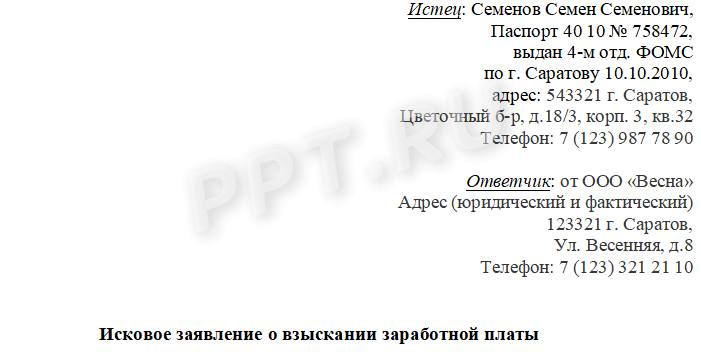
In the event of an individual conflict, filing a claim for a labor dispute with the labor commission is possible at any time.
Deadlines for filing a claim in court for an employee:
- for the resolution of an individual dispute - 3 months from the date when he learned or should have learned about the violation of rights;
- for disputes about dismissal - 1 month from the date of delivery of a copy of the order or issuance of the work book;
- on the issue of non-payment (incomplete payment) of wages and other charges - one year from the date of the established deadline for receiving payment.
The employer has the right to file a claim for damages within 12 months from the date of discovery.
The limitation periods are restored in accordance with the Civil Code of the Russian Federation. The circumstances to justify their extension are documented.
The following terms of consideration apply in court (Article 154 of the Code of Civil Procedure of the Russian Federation):
- reinstatement at work - 1 month;
- other disputes - 2.
The procedure for considering collective disputes is regulated by Art. 402-404 Labor Code of the Russian Federation.
Valid reasons for missing the deadline for filing a claim are listed in paragraph 5 of the Resolution of the Plenum of the Supreme Court No. 2 of March 17, 2004.
In difficult cases, it takes more than one year to resolve the conflict.
Limitation periods:
- for reinstatement at work - 30 days;
- for repayment of arrears of wages and other financial obligations and requirements - 12 months;
- other labor disputes - 90 days.
When going to court, a plaintiff-employee is exempt from paying state fees (Article 393 of the Labor Code of the Russian Federation).
The plaintiff-employer calculates the duty in accordance with Art. 333.19 Tax Code of the Russian Federation. The size is similar to general jurisdiction cases.
Money issue
The current legislation does not contain provisions obliging the employee to retain his average earnings for the period of his participation in the legal process as a plaintiff, including in a claim against the employer.
But it should be noted that if the claim is satisfied, the organization may have an obligation to make any payments. The amount and types of payments depend on the employee’s claims with which he went to court.
Article 234 of the Labor Code of the Russian Federation regulates the obligation of the organization to compensate the employee for the earnings he did not receive. It arises in cases where the employee did not receive earnings as a result of:
- illegal removal from work, dismissal or transfer to another job;
- the employer’s refusal to execute or untimely execution of the decision of the labor dispute resolution body or the state legal labor inspector to reinstate the employee to his previous place;
- delay by the employer in issuing a work book to the employee, entering into it an incorrect or non-compliant formulation of the reason for dismissal.
Thus, the employer must clearly understand that the employee does not have the right to claim average earnings for the period of absence from work during the period of participation in the trial as a plaintiff. At the same time, the employer may have an obligation to pay the plaintiff the average salary based on a court decision if the illegality of the employer’s actions towards the employee is established.
We invite you to familiarize yourself with the Order on the appointment of a person responsible for maintaining work records
In what cases to apply
A labor dispute occurs when the parties do not reach an agreement.
Common reasons: labor law has been violated, the application of Labor Code norms has been violated, and working conditions have been changed. Let us list the areas of labor conflicts:
- dismissal and employment;
- labor conditions and safety;
- training;
- relations between the team and management;
- violation of social guarantees.
https://www.youtube.com/watch?v=ytdeven-GB
Types of labor disputes:
- individual (Article 381 of the Labor Code of the Russian Federation). They are determined by the employer-employee relationship;
- collective (one side of the conflict is the collective, the trade union).
The jurisdiction of labor disputes is regulated by Art. 23-32 Code of Civil Procedure of the Russian Federation.
The bulk of conflicts (Article 60 of the Labor Code of the Russian Federation) are considered by labor commissions of enterprises or in territorial inspectorates. But they do not resolve the following issues:
- about reinstatement after dismissal;
- payment of arrears of wages;
- for unreasonable refusal of employment;
- about illegal transfer to another position;
- about changing the article and date of dismissal;
- disciplinary claims;
- disputes regarding confirmation of the existence of an employment relationship;
- on payment of wages for forced absence;
- for violation of the rules for the use of personal data;
- in cases of discrimination of various types.
To protect the listed rights of an employee, send a statement of claim regarding a labor dispute to the district court (clause 1, part 1, article 22 of the Code of Civil Procedure of the Russian Federation). The court is considered as the last resort. The union representative will provide you with support - this is permitted by the procedure.

The following persons apply to the magistrate's court (Article 23 of the Code of Civil Procedure of the Russian Federation):
- to issue a court order in a labor dispute;
- for the purpose of collecting unpaid wages, vacation pay, compensation and other amounts due.
The employer also has the right to file a claim in the district court:
- to recover material damage from the guilty employee;
- if it is registered as an individual entrepreneur or is a religious organization.
A few words about territorial jurisdiction: starting from 2021, an employee has the right to go to court at his place of residence (Part 6.4 of Article 29 of the Code of Civil Procedure of the Russian Federation). This applies to work in branches and representative offices of non-resident organizations. To recover material damage from the guilty employee, the employer files a claim in the district court at the place of residence of the defendant or at the location of the organization, and the plaintiff chooses to appeal the place of execution of the contract or employment contract (Part 9 of Article 29 of the Code of Civil Procedure of the Russian Federation).
